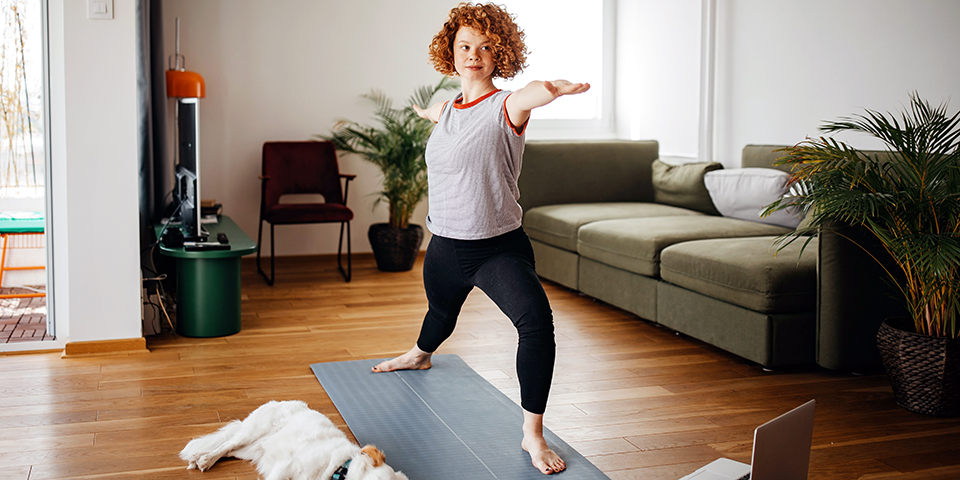For many of us, especially those of us who sit at a desk all day, a consistent goal is to add more movement to our lives.
And when people go looking for a new exercise program, many turn to yoga thanks to its huge list of benefits, such as weight loss, increased strength, and stress relief.
But this new exercise routine brings up some questions, like how often should you do yoga, where should you do it, and how can you avoid injury.
To answer those questions and more, we turned to the experts.
How many times a week should I do yoga?
The answer to how often you should do yoga is dependent upon many different factors, including how much time you have, your ability to commit financially, your personal goals, your fitness level, and your experience with yoga.
So although there’s not exactly a magic, one-size-fits-all answer to this question, Lizzie Brooks, E-RYT yoga teacher in Austin, Texas, provides some helpful insight into how often you should do yoga.
“Some yoga is always better than no yoga. So if you can only do one class a week, obviously that’s better than none,” she says.
However, since your body has a habit of reverting back to old tension patterns, you might want to make an effort to do yoga more than one day a week.
“If you can up your yoga to at least three classes a week, your body and brain will ‘remember’ the poses better,” Brooks adds.
How much yoga should beginners do?
People who are just starting yoga can follow the same guidelines listed above, with a few additional suggestions.
According to Yoga52 instructor Odette Hughes, yoga beginners should listen to their bodies to know what’s right for them.
“Starting with one class a week is a good general guideline so that you can gain familiarity with the postures and new ways of moving,” Hughes says. “When you start feeling like you need more challenge, then start to increase your practice duration or do a harder class.”
But be cautious of overloading right out of the gate.
“I see folks go hard and fast for months only to burn out,” Brooks says. This is where “listening to your body” really comes into play.
If you feel like your body needs time to rest between yoga classes, then let it rest. If you feel discomfort or pain in a pose or movement, then modify it or opt out of it.
“Pain is your body’s signal that something is not working for it,” Hughes says. “Even if another person doesn’t feel the same thing in the same pose, you need to listen to your own body. As long as you do this and don’t push yourself too hard, yoga will be therapeutic and not too taxing to your body.”
Can I get injured by doing too much yoga?
As with most everything in life, balance is key. Both too much and too little movement can be detrimental to health, and this holds true for yoga, too.
“Our muscles become achy and imbalanced when we don’t move enough,” Hughes says. “Our cultural habit of sitting for hours every day really harms our body and often contributes to pain we experience.”
Adding some yoga into your routine is a great way to help you move more throughout your week.
As to the reverse, it’s also possible to do too much yoga.
“You can injure yourself in any type of exercise,” Brooks says. “I see students pushing way too hard in poses and I remind them to pull back.”
Instead of thinking that more is always better, listen to your body and slow down if it feels like you’re doing too much.
Can I do yoga at home?
Though a home practice gives you tons of flexibility with your schedule, having a teacher guide you through your yoga practice also has a lot of benefits.
“I am a huge fan of a home practice, but I feel that going to public classes first can give a student a bit more guidance and insight on healthy movement,” says Brooks.
However, yoga studios can be expensive and inconvenient.
Luckily, if you find the right at-home yoga materials, you can get the benefits of an instructor wherever you are.
Take Yoga52 for example, which can be streamed from any device connected to the Internet.
“This program gives you all the benefits of yoga with an instructor thanks to the very precise and thorough instructions,” says Marie Grujicic-Delage, a Yoga52 instructor.
This gives you the best of both worlds: starting yoga with an instructor and doing it from the comfort of your home on your own schedule.
The Takeaway
There’s no one-size-fits-all answer to how much yoga is right for you. What’s most important is listening to your body and adding more movement as it’s ready.
Start somewhere, and find how much yoga is right for you.





